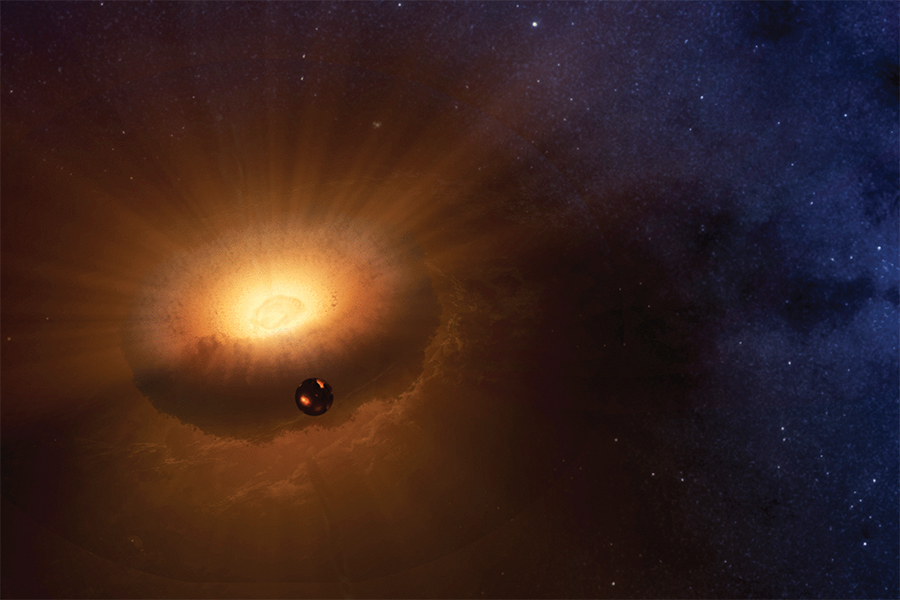
Model shows moon forming from vaporized Earth material
Research from Harvard University Ph.D. candidate Simon Lock and UC Davis professor Dr. Sarah Stewart updates the traditional lunar formation theory. A massive body slammed into the Earth, creating a huge spinning cloud of vaporized rock called a synestia. Portions of the synestia eventually formed the moon, and, after sufficient cooling, the Earth.
The synestia model can account for a larger impact than traditional moon forming models and erases some of the problems found in previous theories.
“The model that’s in the textbooks predicts that most of the moon is made out of the thing that hits us, and the reasonable assumption is the thing that hits us must look a little different,” Stewart said. “But the moon looks very similar to the Earth, in many ways. In bulk elements, it looks very much like our mantle, and in isotopic ratios of many elements, it is almost an identical twin. That’s been the hardest part.”
Isotopic ratios in materials are similar to fingerprints in forensic studies — unique amounts of compounds are found in materials due to properties such as heat and pressure at the time of formation. The moon and the Earth have extremely similar isotopic ratios, indicating they have the same source material, but the moon was likely formed at a higher temperature than the Earth.
“If you look at the major rock-forming elements — magnesium, silicate, aluminum, calcium — [the Earth and moon] look almost the same,” Lock said. “Same proportions, same ratios. But, if you look at things that are more easily vaporized — potassium, sodium, germanium, copper — the moon is much more depleted in those elements relative to Earth. This has been a conundrum that we’ve known since the Apollo era.”
The synestia theory helps explain the differences in volatile compound ratios by forming the moon earlier than the Earth, when the synestia was hotter and more active, vaporizing away elements like potassium and sodium from the rock mixture.
“Our model, because you have a much more energetic impact, you have a lot more mixing between the two bodies,” Lock said. “If the moon forms inside the Earth, it acquires the isotopic composition of the vapor around it, with some small differences. When it separates away from the synestia, it takes its Earth-like isotopic composition with it.”
While no synestias have been visually observed with telescopes or detected through radiation signatures, Lock and Stewart said this is to be expected. Synestias are thought to only exist for dozens or hundreds of years, a blink of an eye on the cosmic scale where processes take place over millions or billions of years.
“The problem with trying to detect synestias is that they are very short-lived,” Lock said.
Detailed modeling work suggests many other planets and moons may have gone through synestia stages as well. The results may bolster research outside of the planetary science community, informing future work of geologists and atmospheric scientists curious of how planets accreted material and gathered up initial atmospheres.
“This study is truly transformative,” said Dr. Nicolas Dauphas, a professor at the Origins Laboratory at the University of Chicago. “It is not often that one encounters a study that makes you re-evaluate your fundamental understanding of a process and this study definitely falls in that category.”
The moon forming from a synestia solves some of the problems associated with the classic giant impact theory. More experimental data can help further describe what conditions were like during and after a massive impact like the one which created the moon.
“The next step for a synestia theory is more detailed simulation of both chemistry and physics of the synestia, which may involve very massive computer simulations,” said Dr. Matija Cuk, a research scientist at the SETI Institute and one of the co-authors of the study.
The synestia team was previously been covered by The Aggie in 2016 and 2017.
Written by: George Ugartemendia — science@theaggie.org



